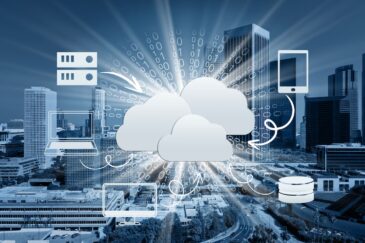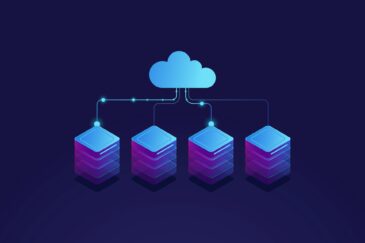When planning for IT modernization, clearly define how it will support business goals, whether it involves improving customer experience, streamlining operations, or unlocking new revenue opportunities. A strategic alignment helps ensure the investment delivers value by enhancing competitiveness and driving growth. Additionally, understanding the expected ROI helps businesses balance short-term cost savings with long-term value, such as increased agility and innovation.
A thorough evaluation of legacy systems helps identify which ones should be retained, upgraded, or replaced during modernization. This involves creating a complete inventory of current IT assets and assessing their relevance, efficiency, and scalability. Legacy systems often present integration challenges with modern platforms, such as cloud environments or advanced analytics tools. So, it’s important to consider how these systems will fit into the new IT landscape. Evaluate and decide whether to modernize, migrate, or decommission each system to ensure a smooth transition.
Only some organizations are fully prepared to migrate all workloads to the cloud. You need a clear cloud strategy, whether moving entirely to the cloud, maintaining a hybrid cloud/on-premise infrastructure, or adopting a multi-cloud approach. Assessing which workloads are cloud-ready and prioritizing their migration ensures a smooth transition without overwhelming your IT environment. Consider your security, compliance, and operational needs when determining your cloud readiness.
Effective data management is critical, and data must be carefully migrated to ensure accuracy, security, and availability. This requires implementing robust data governance practices to maintain data quality throughout the transition. Data migration should minimize disruption while helping you fully leverage your data in the modernized environment. Moreover, structure your data properly to facilitate advanced analytics, reporting, and decision-making in the new system.
Security is a top priority during modernization, particularly given the complexity of modern architectures involving cloud environments, distributed networks, and third-party services. IT modernization efforts should enhance your organization’s security posture by integrating modern security tools and practices, such as advanced encryption, multi-factor authentication, and real-time monitoring. Additionally, you must ensure that your modernization efforts adhere to industry-specific regulations such as GDPR, HIPAA, or local standards, as failure to do so can lead to major legal and financial repercussions.
IT modernization services require specialized skills that may not exist within your current workforce. Emerging technologies like cybersecurity, cloud computing, and artificial intelligence require expertise that organizations need to develop internally through training or acquire through hiring. Additionally, IT modernization requires a cultural shift, embracing agile methodologies and continuous improvement mindsets. Investing in workforce development and fostering an innovation-oriented culture can help you fully realize the benefits of modernization.
While modernization can bring long-term cost savings through optimized infrastructure, reduced maintenance, and increased efficiency, the initial investment can be significant. It’s important to balance upfront expenses, such as new software, hardware, training, and migration services, with long-term financial benefits. Additionally, organizations should be aware of hidden costs that may arise, such as unexpected integration issues, licensing fees, and maintenance of legacy systems during the transition.
Evaluate different technology stacks and platforms that meet your business needs and offer the flexibility to scale and adapt to future growth. Select vendors who provide robust support, reliable service, and a commitment to innovation. Vendor roadmaps should align with your company’s modernization goals to ensure long-term viability. The wrong vendor or technology can result in costly rework or limit your ability to innovate.
Executive buy-in is essential for driving the initiative forward and ensuring the necessary resources and support are available. Ensure that your internal team is prepared for upcoming changes, which includes addressing potential resistance to new technologies and providing the right training and support to ensure smooth adoption. Engaging users early and communicating the benefits of modernization will help ease the transition and ensure widespread acceptance.
Modernizing IT systems enhances your ability to scale operations in response to growth or market changes. A modern IT environment should be designed for scalability, enabling the business to increase capacity, add new services, or expand geographically without requiring extensive re-engineering. Additionally, ongoing performance monitoring helps identify areas for optimization and ensures that the new systems operate efficiently. Building scalability and performance monitoring into the modernization strategy helps future-proof your IT environment and supports long-term business goals.
Adopt technologies that not only meet your needs today but also have the potential to integrate emerging technologies. Create a flexible, scalable infrastructure supporting future business objectives and technological advances. Future-proofing your IT environment ensures that your organization can continue to innovate and remain competitive for technological advancements.
Cloud migration allows you to scale IT resources up or down based on demand, helping them respond quickly to changes, whether accommodating growth or optimizing costs during downtime. This scalability is hard to achieve with traditional, on-premise infrastructure.
Cloud platforms operate on a pay-as-you-go model, meaning you only pay for the resources you use. This approach reduces the upfront costs associated with purchasing and maintaining hardware, allowing businesses to allocate budget more efficiently toward innovation rather than infrastructure upkeep.
Cloud solutions provide ready-to-use platforms and services that enable rapid application deployment, allowing teams to experiment and launch new services faster. This helps organizations modernize their IT landscape by integrating innovative tools without the long lead times associated with traditional infrastructure.
Leading cloud providers offer robust security features, including encryption, access controls, and continuous monitoring, helping organizations enhance their security posture. This is especially valuable for IT modernization as businesses increasingly prioritize data security, privacy, and regulatory compliance.
Cloud migration makes adopting cutting-edge technologies like AI, ML and IoT easier, which are critical in modernizing business processes, optimizing operations, and enabling data-driven decision-making.
Cloud-based solutions often come with built-in redundancy and backup capabilities, ensuring critical business operations remain intact even during disasters. This resilience is vital to modern IT infrastructures requiring high availability and minimal downtime.
Cloud platforms facilitate seamless collaboration by enabling teams to access files and applications from anywhere. This aspect of cloud migration has become crucial in modern IT ecosystems that must support a remote or hybrid workforce.
Cloud providers offer advanced services such as automated infrastructure management, which reduces manual IT tasks and allows teams to focus on high-value work. Automation tools within cloud environments accelerate modernization by streamlining operations and improving productivity.





